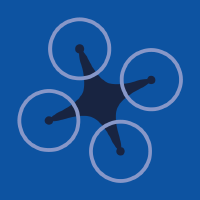Topic Menu
► Topic MenuTopic Editors



Future Internet Architecture: Difficulties and Opportunities
Topic Information
Dear Colleagues,
Since the formal deployment of the TCP/IP protocol in the 1980s, and with the development of network technology, Internet-borne applications (including email, cloud computing, online shopping, social networks, etc.) have increasingly affected people's work and life. New applications in areas such as smart transportation, smart cities, industrial Internet, telemedicine, and holographic communications have quietly emerged, and people are rapidly entering an intelligent world where everything is perceived and connected. Countless IoT-based applications have been developed to date; consider smart cities, smart highways, remote robotic surgery, unmanned driving, drones, VR games, etc. As the Internet officially ushers in the second stage of its development, the architecture and capabilities facing us in the future pose a huge challenge.
This topic aims to bring together relevant researchers from industry and academia to share their latest discoveries and developments in the fields of Internet architecture. The topics of interest include, but are not limited to, the following:
- Advanced communication network infrastructures for future Internet;
- Architecture and protocol system design for future Internet;
- Resource management, allocation, orchestration, and optimization for future Internet;
- Internet of Things technologies for future Internet;
- Multiple access and transmission control technologies for future Internet;
- Software-defined network functions and network virtualization technologies for future Internet;
- Spectrum-sharing technologies for future Internet;
- Big data and security issues for future Internet;
- Cloud computing, fog computing, and edge computing technologies for future Internet;
- Digital-twin technologies and applications for future Internet;
- Intelligent transportation system technologies for future Internet;
- System interoperability and flexible service composition for future Internet;
- Smart systems for public security and safety for future Internet;
- Social network analysis and mining for future Internet;
- Discovery and identification of false and bad information for future Internet;
- Intelligent analysis and processing of multimodal data for future Internet;
- Application of artificial intelligence for future Internet;
- Test platform and prototype deployment;
- Other application aspects for future Internet.
Dr. Peiying Zhang
Dr. Haotong Cao
Dr. Keping Yu
Topic Editors
Keywords
- future Internet architecture
- advanced technologies
- network management and optimization
- future communication technology
- application of artificial intelligence
Participating Journals
| Journal Name | Impact Factor | CiteScore | Launched Year | First Decision (median) | APC | |
|---|---|---|---|---|---|---|

Drones
|
4.8 | 6.1 | 2017 | 17.9 Days | CHF 2600 | Submit |

Electronics
|
2.9 | 4.7 | 2012 | 15.6 Days | CHF 2400 | Submit |

Future Internet
|
3.4 | 6.7 | 2009 | 11.8 Days | CHF 1600 | Submit |

Information
|
3.1 | 5.8 | 2010 | 18 Days | CHF 1600 | Submit |

Mathematics
|
2.4 | 3.5 | 2013 | 16.9 Days | CHF 2600 | Submit |

MDPI Topics is cooperating with Preprints.org and has built a direct connection between MDPI journals and Preprints.org. Authors are encouraged to enjoy the benefits by posting a preprint at Preprints.org prior to publication:
- Immediately share your ideas ahead of publication and establish your research priority;
- Protect your idea from being stolen with this time-stamped preprint article;
- Enhance the exposure and impact of your research;
- Receive feedback from your peers in advance;
- Have it indexed in Web of Science (Preprint Citation Index), Google Scholar, Crossref, SHARE, PrePubMed, Scilit and Europe PMC.

